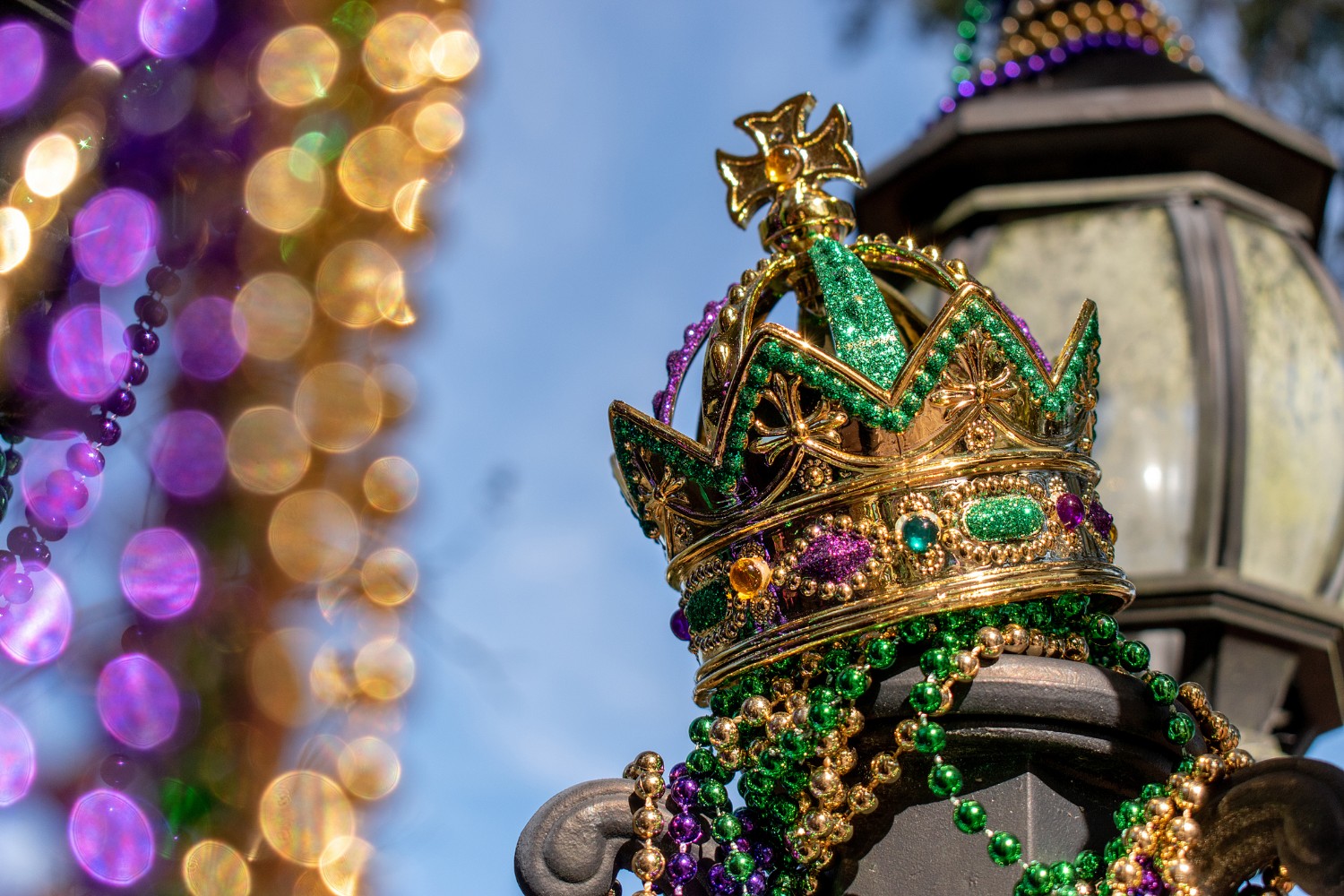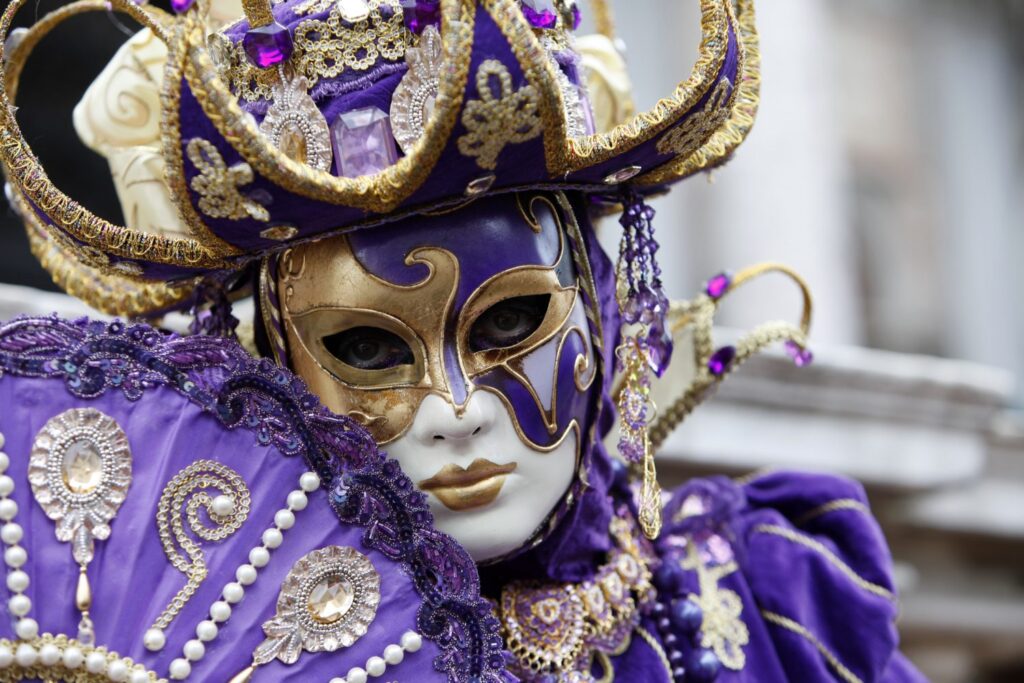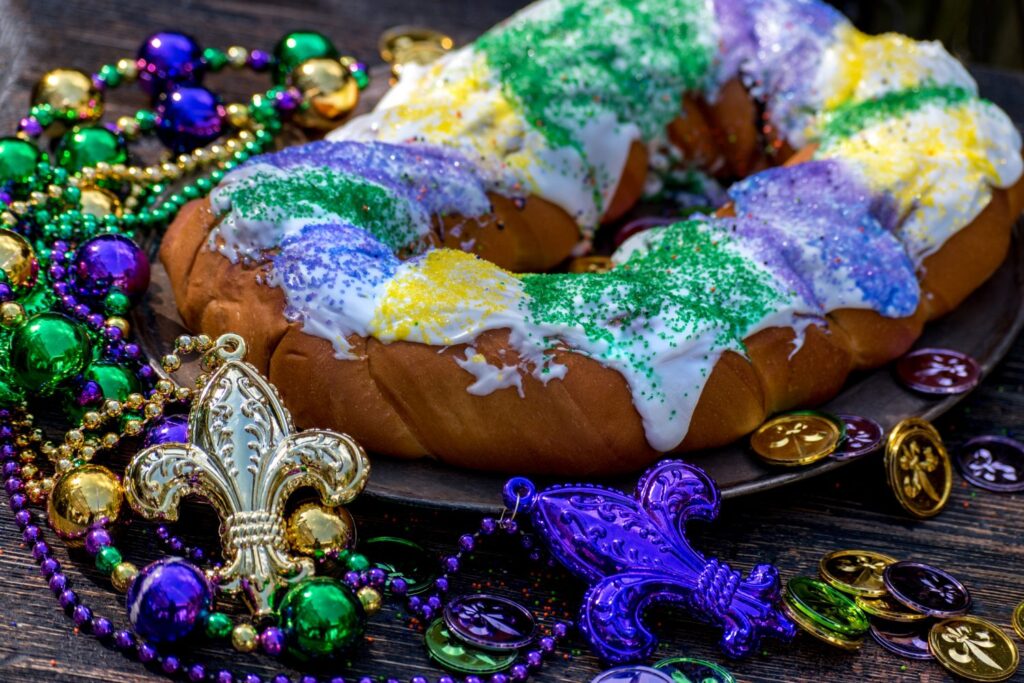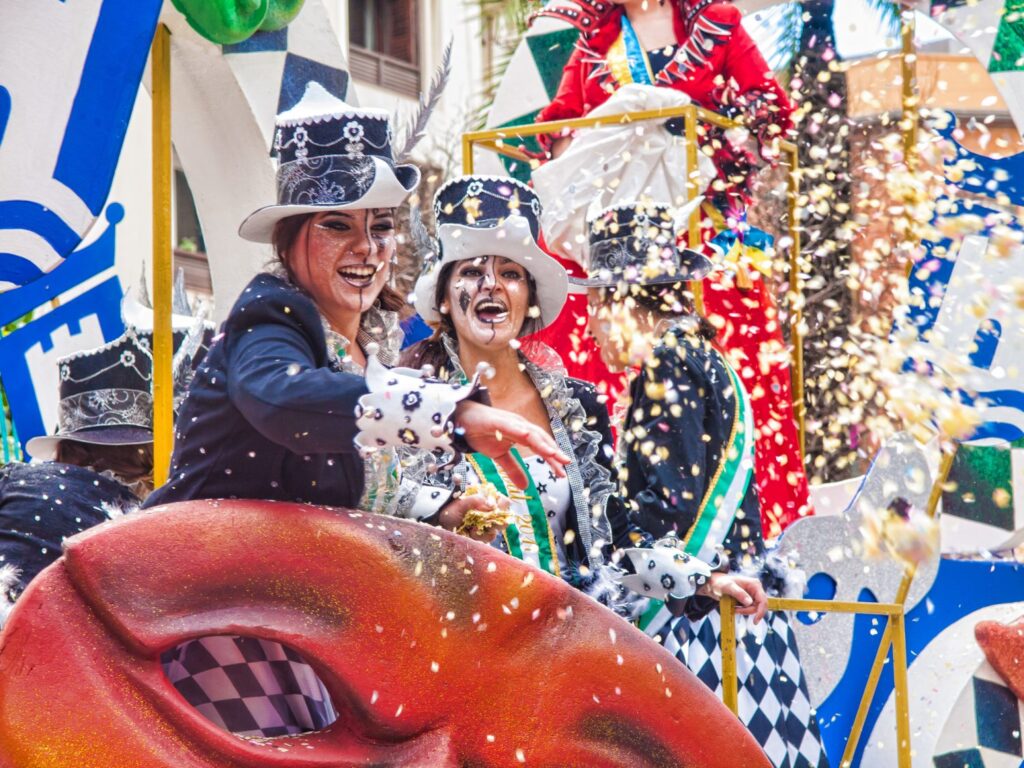
Here’s All You Need to Know About Mardi Gras Festivities
What is the first thing that comes to your mind when you think of New Orleans? We bet it’s Mardi Gras, and rightfully so! This event is the biggest in the city and the world, and is more than just a day—it’s a whole season. If you’ve researched Mardi Gras a bit, you know it can get overwhelming pretty quickly. When is it, exactly? What should you see? What can you expect? Where should you stay? All these questions are crucial and need answers. Luckily for you, that’s why we’re here. In this blog, we’ll tell you everything you need to know about Mardi Gras festivities to plan the best trip possible. Read on and take notes, because you’re about to embark on a dazzling journey!
Your Guide to New Orleans Mardi Gras
Mardi Gras is the most quintessential element of New Orleans, and no matter what you do, you just can’t escape it. It’s a mesmerizing time to visit the city and experience the effervescence that takes over the streets, the community spirit that binds people together, and the decadence of the floats and parades. We want to make sure you experience this fabulous festival the right way, so let’s dive in deeper into what makes Mardi Gras so special (and how you can make the most of it during your stay).
The History of Mardi Gras
What Is Mardi Gras?
First: What is Mardi Gras? It’s so much larger than life that it’s hard to pinpoint in a few words what it is and what it represents. To do so, we need to travel back in time to Medieval Europe—specifically Italy and France.

Mardi Gras takes its origin in the celebration of “Carnaval”, which derives from the Latin words “carne” (meat) and “levare” (to take off). It celebrates the “boeuf gras,” or fat beef in English, which then turned to Mardi Gras, or fat Tuesday. It was also a time when the existing order could be overturned and masquerade became real life, especially in Venice, where the citizens lived so lavishly. Even today, the city holds some of the most luxurious balls in the world! Mardi Gras was also a time where people—both elites and commoners—could let go of their inhibitions and religious shackles. They were free to enjoy life to the fullest and express their needs and desires, all with the anonymity of a mask. It was also the time to express discontent with power! For example, some French Carnaval traditions included parading a float made in the image of the local lord or king and burning it on the main square!
The general tradition of Mardi Gras came to America in 1699, when French-Canadian Jean Baptiste Le Moyne bought land south of New Orleans (which wasn’t established yet) and named it “Pointe du Mardi Gras.” It was there that the first Mardi Gras of the country was celebrated. It was only after New Orleans was established in the 1730s that Mardi Gras became an official celebration, with Louisiana’s governor organizing elegant society balls.
But what about the parades? They only appeared a hundred years later! Mardi Gras—a culture of its own—became intertwined in New Orleans way of life the grand celebration we know and love today.
When Is It?
So, when is Mardi Gras? We bet you’ve already typed it into a search engine before you found this blog. Well, as we said earlier, Mardi Gras isn’t just a day—it’s a whole season, and preparations begin months in advance. In fact, they never stop! The season officially starts on January 6th (for the Christian celebration of Epiphany) and lasts until the day before Lent on Ash Wednesday—40 days before Easter. This explains why the actual date of Mardi Gras can change depending on the years. Sometimes we have a long Mardi Gras season, and other times a short one. In doubt, always count back from Easter.
Krewes and Traditional Characters
Some of the most important and famous parts of Mardi Gras are the parades and floats! Contrary to what you might think, parades don’t only happen on the day of Mardi Gras. Instead, they occur throughout the weeks leading up to it, and they’re all linked to specific Mardi Gras Krewes. But what are Krewes, exactly? Well, let’s find out now, shall we?

What Are Mardi Gras Krewes?
Krewes are like Mardi Gras clubs, and there are more than 54 in the city itself (the suburbs have even more!). The first Krewe dates back to 1856 and was called the Mistick Krewe of Comus. The second one, the Twelfth Night Revelers, was formed in 1870, and many others followed like the Krewe du Vieux, Krewe of Momus, and Krewe d’Elusion, Krewe of Druids, Krewe of Tucks, and more.
All the Krewes parade, or “roll” down the streets, usually in their own area where their “den” is (or headquarters, if you prefer). After all, New Orleans neighborhoods are little worlds of their own, and each Krewe reigns over one. Some are taken more seriously than others, with a few organizing lavish balls that highlight the Mardi Gras celebrations—like in the old days of Louisiana’s governors—while others put on a more comical and eclectic neighborhood show!
Mardi Gras Rex
One of the most significant Mardi Gras traditions is the one of Rex, the king of Carnaval (“Rex” is the Latin word for “king”). He was created in 1872 to preside over the daytime parades. You can see him going down St. Charles Avenue on his float the day of Mardi Gras. On Lundi Gras, the day before Mardi Gras (Lundi means Monday in French), you can spot him and his queen on the front page of the newspapers!
Mardi Gras Activities
What Can You Do During Mardi Gras?
Now that you know more about the history of Mardi Gras, it’s time to focus on what you can do here in New Orleans during this season. If New Orleans is generally a flamboyant city, you haven’t seen anything until you’ve come for Mardi Gras. Picture hundreds of beautifully crafted floats, splendid costumes, delicious pastries, and most importantly, an exciting sense of tradition that hovers over the city for weeks! Before we jump into the details of the parades, here are some other ways you can dive deeper into Mardi Gras’ traditions.

Visit the Presbytere Museum
The best way to understand what Mardi Gras means to New Orleans is to take a journey back through time! Sadly, time machines don’t exist yet, but who needs one when there’s the Presbytere Museum downtown? Mardi Gras: It’s Carnival Time in Louisiana! is a permanent exhibit there that gives you a wonderful perspective on the rituals and celebrations of Mardi Gras through the centuries. You can see magnificent and historical floats, costumes, throws, and the mysterious world of Krewes.
The Presbytere Museum is located at 751 Chartres Street and is open Tuesday through Sunday from 10 a.m. to 4:30 p.m.
Eat King Cake
Food in New Orleans is absolutely fabulous, so it’s no surprise that Mardi Gras has its own special pastry! King Cakes and Mardi Gras go hand in hand—you simply can’t avoid it. If you’ve never seen one before, you’re in for a treat. It consists of a circular brioche-like cake topped with glaze and colorful sugar. Each cake has one tiny plastic baby inside, and the lucky one who finds it becomes the “King” (who has to bring the cake to the next party). King Cake colors generally include purple, green, and gold, which stand for justice, faith, and power. To taste some of the best in town, head over to New Orleans Cake Cafe! They have unique recipes and make colorful creations you’ll love.
Did You Know? The King Cake tradition was brought over from France, where they still actively celebrate Carnaval. It’s a typical Epiphany treat that is regularly passed around at work, home, and even schools. Did you know that there are also two different recipes? The Northern Part of France makes “Frangipane,” an almond cream-based cake, while the Southerners prefer the “Galette,” a circular, orange flower brioche lightly sprinkled with granular sugar (more like the traditional New Orleans King Cake).
Parades
Which Parades Should You See?
There are 54 main parades for Mardi Gras, as they’re all linked to the different krewes. That’s a lot to watch, and that’s why we’re often asked which ones are the best. What a tough question to answer, and the wrong question to ask! Contrary to what you might think, parades don’t only happen on the day of Mardi Gras, but all throughout the four weeks leading up to it. It’s a whole season, remember? Get ready for some mind-blowing floats, some of which date back to the early 1900s! It takes months to prepare them, and the results are more than worth it. Mardi gras is about that fantastic craftsmanship that unites the city, and with that in mind, here are some of our recommendations week by week:

4th Weekend Parades
The Krewe de Jeanne d’Arc is the first krewe to open the parade season. They roll on January 6th to honor the birthday of the French historical icon. This walking parade down the French Quarter doesn’t showcase big floats, but it does feature medieval costumes and lots of candlelights. This parade is one of the most serious shows. Each year, the Krewe picks a 16-year-old girl to play Jeanne and lead the parade, but only if she passes a full examination of French language and history! The parade is certainly worth seeing.
3rd Weekend Parades
The 3rd weekend before Mardi Gras isn’t so much for kids. It’s the time of celebrations that embodies the ancestral traditions of Carnival the best. It’s all about decadent and satirical night parades down Frenchman Street and the French Quarter. Make sure you attend the Krewe d’Elusion and Krewe du Vieux parades!
2nd Weekend Parades
The second weekend before Mardi Gras day is exactly what you picture when you think of Mardi Gras. It’s not a corporate show, but the realization of people’s efforts to create one of the greatest shows on Earth. At night, everyone comes out. Go to different neighborhood to witness various locals and crowds. Canal Street, for example, has a lot of tourists and is one of the best places to experience the collective enchantment that’s taking over the city.
Mardi Gras Weekend (Wednesday through Sunday)
Forget Christmas—this is the most magical time of the year! There are 3-4 parades a day on actual Mardi Gras, so you’ll have plenty of choices! Go down to the quarter at the end of our street (20-minute walk). The creativity that goes into the floats and costumes will blow your mind!
We cannot recommend the Krewe of Rex parade enough—not only because it’s one of the most popular, but also because it passes right by La Belle Esplanade! It’s the big event where the mayor gives Rex the key to the city. Zulu, another iconic Mardi Gras character, pulls up in a boat at Spanish plaza to exchange plaisanterie with Rex, after which they both head to the headquarters on Orleans and Broad (a few streets over from our craft hotel). You might catch one of Zulu’s coconuts if you’re close enough!
In the end, you don’t need to understand every detail of Mardi Gras history or why we celebrate it. You just need to enjoy yourself and let New Orleans cast its spell on you. Get yourself to New Orleans, come for Mardi Gras, and experience it for yourself! You might leave with more questions than you had when you first came here, but definitely with more wonderful memories.
What About the Best Place to Stay?
La Belle Esplanade is really an ideal place to stay for Mardi Gras. First, you’re far enough away from the main parade groups and their madness. All the floats run down Canal Street and St. Charles Avenue, so once you’re in the Garden District, everything is shut off and you’re trapped. La Belle is perfect because you’re right outside of the Mardi Gras craziness, but close enough to see the action first-hand.

La Belle Esplanade is New Orleans’ most unique artisan hotel– and the most personalized! We want you to fall in love with New Orleans and stay here for a few days (to experience it like a local rather than passing through for the night). Get into the New Orleans state of mind and let us show you how enchanting this city really is. Take residence in one of our five suites and wake up every morning to a delicious and authentic breakfast downstairs. We’ll be more than happy to help you out with your daily plans, too: Tell us what you found and we’ll send you someplace better. We’re all about connections here, and we can’t wait to meet you!
[Editor’s Note: We’d like to thank Mrs. Johnson’s Senior Journalism class at Benjamin Franklin High School for submitting material for this blog post. Good work kids! You have bright futures ahead of you if you employ the principles Mrs. Johnson has strived to impart. Best of luck!]